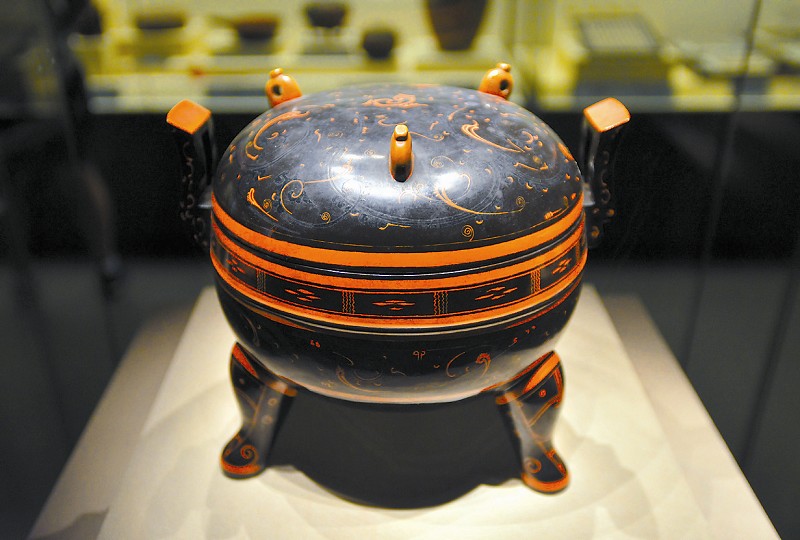Exquisite Chengdu lacquer crafts withstand test of time

This is one piece of Chengdu lacquer ware excavated in the Mawangdui Han Tombs. After more than 1,000 years under the earth, lacquer ware, including lacquer bowls, plates, ear cups and other utensils still have bright colors.
Chengdu lacquer craft was included in the first listing of national intangible cultural heritage in 2006. This craft started in the Shang and Zhou dynasties (c. 1600-221 BC). It was during the Han Dynasty (206 BC-AD 220) that Chengdu became an important production area for lacquer craft.
Chengdu lacquer objects are beautiful in terms of their materials as well as their intricate relief carvings. Both are representative of the superb skills involved in creating China’s traditional crafts. One reason why Chengdu lacquer art has become a specific craft form is that the Sichuan Basin in Chengdu is one place suitable for growing lacquer trees, which only grow between 25 and 42 degrees north latitude and between 95 and 125 degrees east longitude.
Color is the most important element of lacquer items. When lacquer is extracted from the tree, its original color is yellowish-brown. The classic color used in this craft is cinnabar red or so-called China Red, which is made by mixing cinnabar into the original color. China Red is lofty and elegant, yet not too harsh.
Lacquer objects are some of the cultural relics that are best preserved in historic sites. Lacquer bowls, plates, ear cups and other utensils excavated in the Mawangdui Han Tombs still have bright colors, and the ancient characters on them can be identified. This is because once lacquer is solidified, it is incredibly durable. Moreover, it has strong resistance to acid and alkali materials. Hence, it won’t become rotten over the years.
Another source of durability of lacquer items is the process of making raw lacquer. The object is wrapped by one layer of textile and one layer of lacquer repeatedly. The textiles can be silk or linen. The items are then polished to make the surface even smoother. Because of this method, the objects will not break even if they are struck or fall on a hard surface.

 PRINT
PRINT CLOSE
CLOSE